Jack's River Falls: Finding Balance in the Wild
Field Notes II.XXXIX: Backpacking the Cohutta Wilderness to photograph Jack's River Falls
Welcome to Field Notes!
*Check the very bottom of this issue of Field Notes for an important message.
It is just an overnight backpacking trip, but this one will be tough. The Jack’s River Trail stretches through the heart of the Cohutta Wilderness, the largest tract of designated wilderness in the Southern Appalachians. In the Southeast US, this is as wild as it gets.
Wilderness is not defined by stunning vistas or pristine open spaces. It is simply an area in which human intervention on the land has been reduced to a bare minimum. This is the case with the Cohuttas. Its mountains are not very high. Its rivers, though scenic, are not notably large. Views are few and far between. Yet, in the middle of this wild land lies Jack’s River Falls, a destination I now intend on photographing.
In the days leading up to this trip I feel my apprehension rise. Every river crossing is a hazard, and the Jack’s River Trail has more than any other. There are animals and weather to contend with. Trails with no blazes are easily obscured by blown down trees and rarely are they cleared from the path. I am going alone. There is no one to call for rescue. So why go there?
Darkness reigns as I start the drive, a hypnotically steady and smooth transition to dawn. That is, until I reach rutted gravel forest service roads that slow my progress to a crawl. The forecast had been for clouds and later rain, but I can see that will not be the case. Cerulean skies stretch beyond the treetops. Soft morning sunlight filters through the forest. After a detour at a wrong turn on a questionable road, I finally pull into the parking area at Dally gap.
The trailhead is well maintained and marked with signs. Lifting my pack onto my shoulders, I start downhill on an easy walk on the Jack’s River Trail.

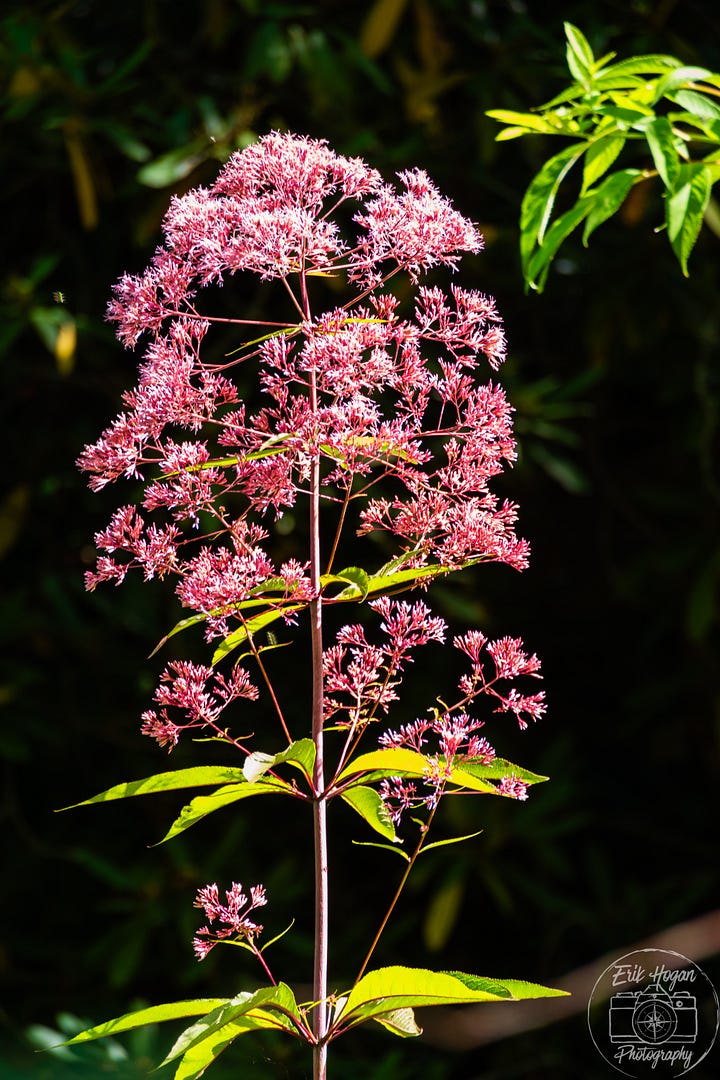
This early section of the trail is such easy walking, in fact, that I begin to wonder if I am on the correct trail. The route should be more than 9 miles, but at this rate of progress, maybe I miscalculated? Looking at my GPS position on the map leads me to believe this will be much shorter than I thought.
Early autumn wildflowers abound. Stalks of pink blooming Joe Pye weed, taller than a man, stand radiant when back lit by the patchy forest sunlight. My awareness turns to the idyllic mildly warm dry air today. Pines and a variety of hardwoods form the canopy above, and the trilling of an unseen woodpecker echos amongst them. Rich earthy scents of soil arise from the trail to envelop me with intimate reminiscence.
Soon I reach the first river crossing. Without signage or blazes, it takes a moment to confirm where the trail picks up again on the other side of the river. It is there as a gap in the shrubbery on the far bank, and there is no doubt I will have to get wet to get there.
The Conasauga River Trail also crosses the Cohutta Wilderness, south of here. The lesson I learned from hiking it last year was that these crossings are too frequent to remove or change shoes at each one. It takes too much time. The effort of dropping and picking back up the pack so often is too great. I plunge into the cool stream, resigned to having wet feet for the day.
After this crossing the character of the trail changes dramatically. Now densely overgrown, I must frequently push my way through undergrowth with my forearms and trekking poles. Then, I begin to Ttencounter fallen trees, victims of past storms and parasitic insects. Scrambling over or twisting under trunks and limbs of every size and chaotic arrangement, trying to stay true to to the trail, devolves into sweaty tedium.
Morning gives way to early afternoon. More frequent stream crossings have me stumbling through slippery river rocks in thigh deep water. This is the wilderness I was anticipating.
I pause for lunch at a bend in the river. Blue lobelia bloom on stream banks lined with waxy rhododendron. Cool fresh scents linger along the waterway, and time spent here to photograph the flowers with the river as a backdrop is a refreshing investment.
Time alone in the wild calls for self reflection and on this day I find myself questioning why I am driven to pursue these challenges of the wilderness. I have an answer, or perhaps just a justification, and it lies in philosophy.
I find the philosophy of Stoicism uniquely suited to me as a guide for a good life. However, reading ancient texts as an aspiring practitioner presents a problem with language. The terms we use today are translations of archaic Latin or Greek, and can only be an approximation of the intended meaning those words carried more than 2000 years ago.
An often cited goal of Stoicism is a state of tranquility, defined by an absence of negative emotions such as anger, fear, or anxiety. To achieve this, the Stoics promote the pursuit of virtue above all else and among the cardinal virtues is moderation. Using this language, though, it can be easily misunderstood that the path is about self denial leading to a flat, albeit calm, emotional state. I do not think this is the intent or true character of this philosophy.
If tranquility is the goal and moderation part of the way of getting there, how is it that I find myself and my pursuit of Stoicism enriched out here at the extreme edge of comfort and safety?
Moving on from lunch I again push my way through chest high brambles obscuring the trail ahead. Boggy dips in the trail reveal stands of shocking red blooms of Cardinal Flower, another variety of lobelia and worthy of a stop for photography.
The early afternoon begins to grow hot and my attention falls inward. But, each footstep in the undergrowth, among hidden roots and rocks, demands focus. To my right the sound of the tumbling river drowns out all other noise.
I raise my eyes from the shrubs at my feet to the path ahead and in that second I see it. A bear. It is just 20 yards ahead of me in a small gap in the forest. The textured black fur of his head and shoulders contrasts sharply with the surrounding green. In that same instant he sees me too, and we lock eyes for a fraction of a moment. His muzzle is a tawny brown and his mouth opens wide as he turns away from me, as if he is verbalizing the same “oh shit!” that my mind is shouting. But the only sound is the rushing water of the stream.
The bear vanishes like a dream, but the vision of him is burned into my mind. With curiosity and not a small amount of fear, I creep forward with camera in hand. But, despite moving carefully and quietly, he is long gone without any sign, a phantom of the forest. Continuing down the trail, I now frequently look back to make sure he is not following me. It isn’t until after the next river crossing that I feel a bit safer.
My personal experience as a Stoic does not seem to be leading to a placid and calm existence. It is actually inspiring in me a profound gratitude for life. Perhaps counterintuitively, I find that my growing awareness and appreciation for life is honed razor sharp by situations that challenge me with uncomfortable, immediate, and potentially deadly consequences.
Stoics developed a mental exercise to approximate this. Called premeditatio malorum, it involves visualizing loss, pain, and hardship in order to gain greater appreciation for what we have. I have found it helpful, but am coming to believe that, at least to some extent, it is important to actually experience the risk in order to gain the most benefit.
There is a spectrum. At one end we fortify ourselves and eliminate suffering to the extent that we can. We cast away concern for anything that lies outside of our control. This makes a person highly robust in the face of ill fortune. The potential downside I see, though, is becoming entrenched where we are. In the extreme it could lead to an inward focus resulting in a lack of engagement in life; a lack of getting-after-it, if you will.
At the other end of the spectrum lies self imposed suffering. We challenge ourselves to face situations that scare the shit out of us. We embrace hardship and peril in a realm of our own choosing in order to intimately know fear, anxiety, and discomfort. In knowing them we grow beyond them and are much better prepared when we meet them as a consequence to what life throws our way. Doing this is enacting premeditatio malorum, but with skin in the game.
Frustration builds at having to cross the same river again and again and again. The afternoon grows long and I approach another long stretch of fallen trees. Hard gnarled bark of red oak scrapes my shins as I climb and scramble on top of the twisted trunks. The trail is lost for a while, until I see it on the far side of the river.
Bushwhacking back to the path, it again follows the river, which widens to an area of open rock. Walking becomes easier and the roar of Jack’s River Falls grows in the distance. A breeze shakes nearby branches before brushing me and cooling the sweat from my arms. My eye catches sight of purple globes of muscadine grapes growing beside the trail. Their juicy tartness energizes my steps.
The light of late afternoon takes on a golden cast as I arrive at Jack’s River Falls. It has been many years since I last visited, and my previous trips were along a much shorter trail. The majesty of this huge terraced waterfall is instantly familiar, yet changed from what I remember. Invasive insects have decimated the pines and hemlocks on the hilltop overlooking the dark waters. What was once a dark forest overlooking the river is now a sparse graveyard of sun bleached trunks. But, the river’s power flows as strong as ever.
I brew coffee and rest. Then comes the work of catching light in a box to try to visually recreate the magnitude of this wild scenery.
In a sense, the place to avoid on our spectrum is the middle ground. There, we find constant moderate levels of stress, frustration, and anxiety, building over a lifetime but without enough stimulus to overcome and grow from them. This is the painful erosion that a modern lifestyle subjects us to.
We are left with a strategy weighted on either end. We make ourselves robust to misfortune by learning to minimize negative emotions, yet at the same time we expose ourselves to misfortune and negative emotions in order to savor life as we overcome them.
What then of moderation? We return to the language problem. Moderation can also be understood as temperance. As temperance, we think less of self denial and more of self control. It requires a presence of mind that allows us to choose the right path, not necessarily the easiest. Temperance allows for simultaneously building both an impregnable sanctuary of the mind and also passionately pursuing life on and even beyond the edge. We can do both, so long as we stay in command of our rational choices. Unlike moderation, temperance does not push us into the mediocre middle ground. Instead, we maintain the discipline to find a balance point between robustness and risk, the weights on either end of our scale.
I spend a couple of hours around Jack’s River Falls, but the hour grows late. The area around this portion of the river is known as Beech Bottom, and its popularity for day hikers on shorter trails has led to it being restricted from camping. I pack my kit and hike back to an area in which I can set up my overnight residence.
Night settles into the surrounding forest. After dinner I retreat into my tent to write and reflect, but soon find myself slipping under the dark current of sleep.
I sleep soundly through the night and morning arrives gently. The treetops come alive with the chirping of warblers and wrens. Packing up camp is a familiar and efficient routine. The route now backtracks even more, to the intersection with the Penitentiary Branch Trail. This trail leads me along a slow and steady climb up to the ridge tops and to the end of this adventure.
Tranquility. This term for the goal of Stoicism implies a tame uninterrupted serenity, and that may indeed be a part of the goal. But tranquility is an approximation of the Greek ‘eudaimonia,’ which we can understand also as flourishing, resilient, and joyful.
So, I choose to confront and overcome my fears and worries of bears, weather, and fatigue; of getting lost or injured or worse. These are very real dangers with high consequences, especially in a pure wilderness area like the Cohuttas. Meeting them demands skin, or maybe even Soul in the Game, and ignites joyful flourishing in every aspect of life. In the wilderness I find eudaimonia and I carry it back with me, manifesting as the quiet self confident steps of temperance.
Postscript- I stand behind my views here as what I believe at this time. However, I won’t claim to be 100% correct and reserve the right to alter my thinking in the future. Some of these ideas solidified for me after a short conversation with . He offers some outstanding insight into life and getting-after-it in his publication What then? I highly encourage you to check it out.
Also, I have drawn some of these concepts from Nassim Nicholas Taleb and his books Antifragile and Skin in the Game. Both highly recommended as well.
So. Am I wrong? Do you find value in this approach or do you have a different way? Or, do you just want to talk about the Cohuttas or encounters with bears (I’ve had a few at this point)? Let’s hear it-
And finally- this trip took place on September 4, 2024. As many of you know, much of the Southern Appalachian mountains were devastated by Hurricane Helene at the end of September. I believe the storm impacted much more to the northeast than the Cohutta Mountains, but all of the national forest lands in North Georgia are currently closed. I have no idea what the current conditions in the Cohuttas are.
If you have ever even considered contributing to Field Notes, NOW IS THE TIME. But, do not contribute anything to me. I ask only that you consider a donation of any amount to relief efforts ongoing in Western North Carolina, Tennessee, South Carolina, Georgia, Florida, and other areas affected by this disaster. I don’t have much, but personally gave some to the North Carolina Disaster Relief Fund. Here’s a link to a spreadsheet with resources-
Thank you.




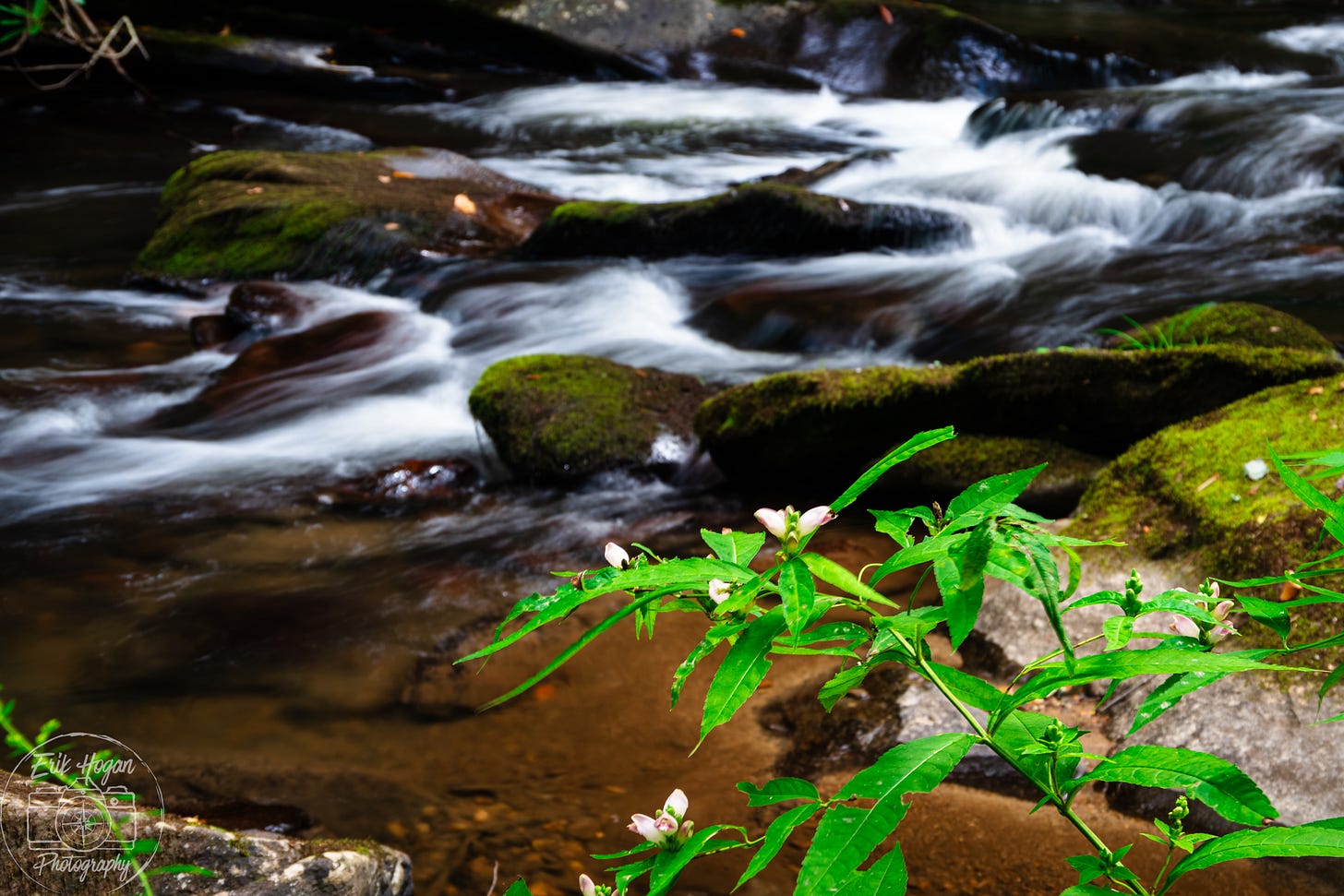
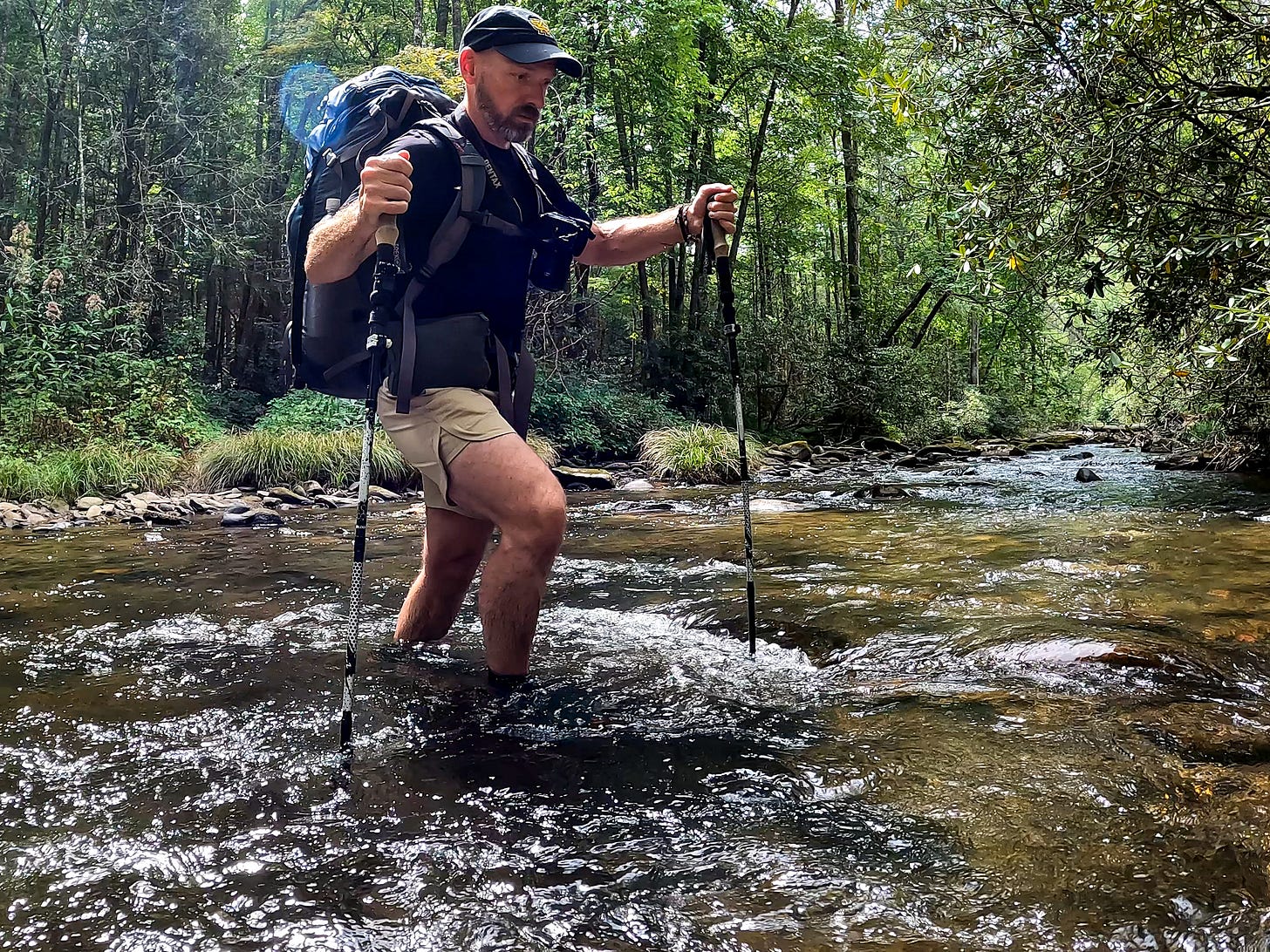
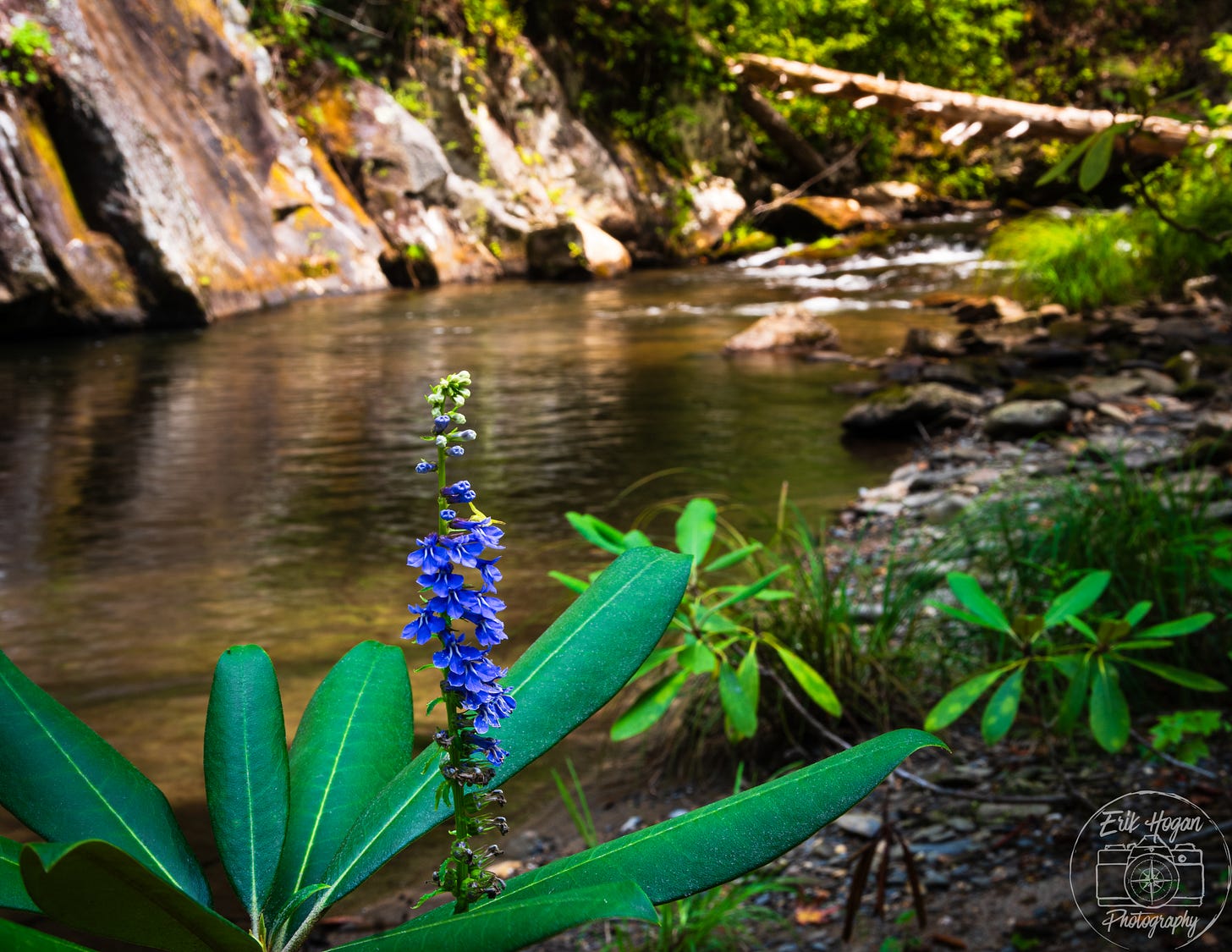
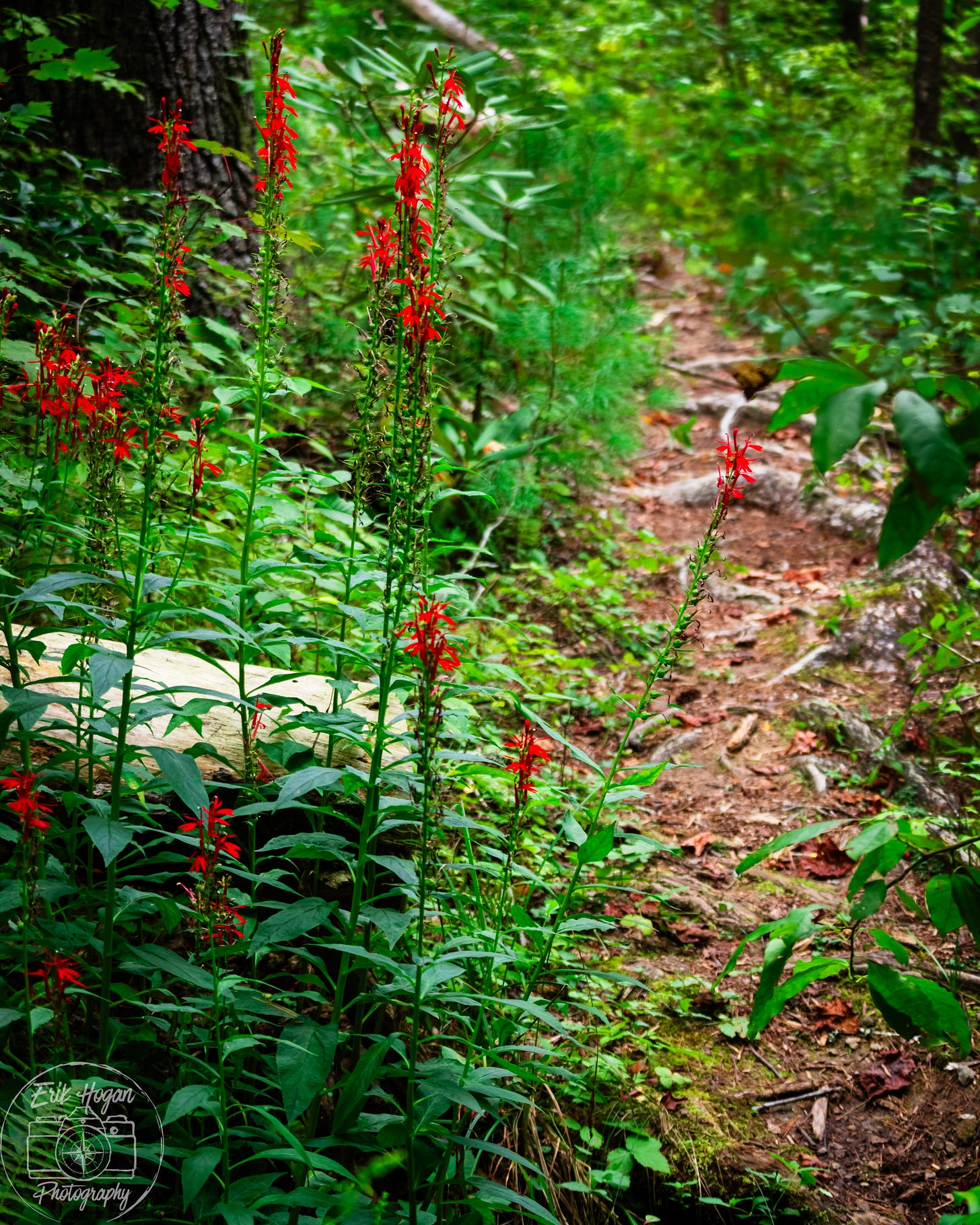
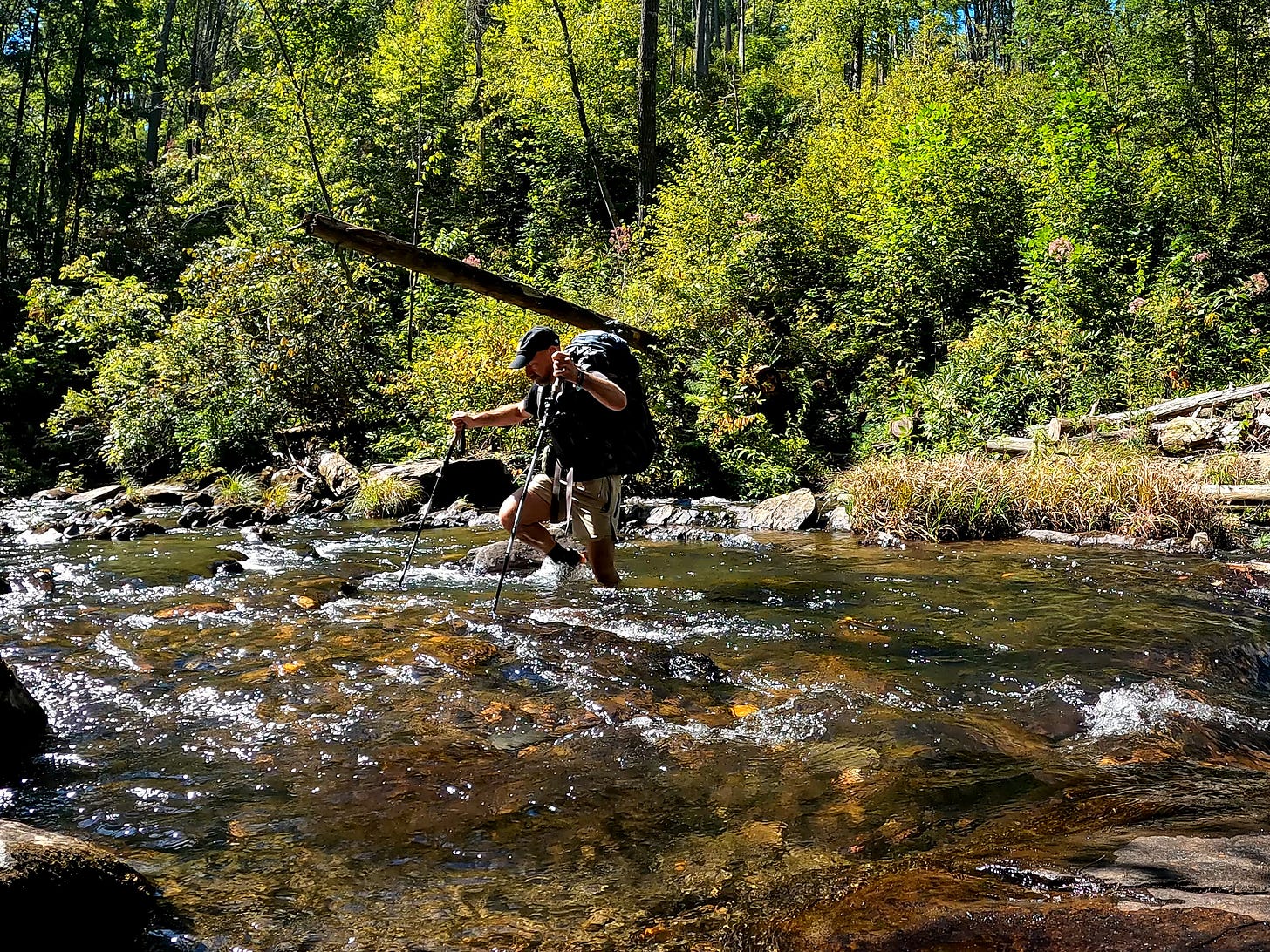
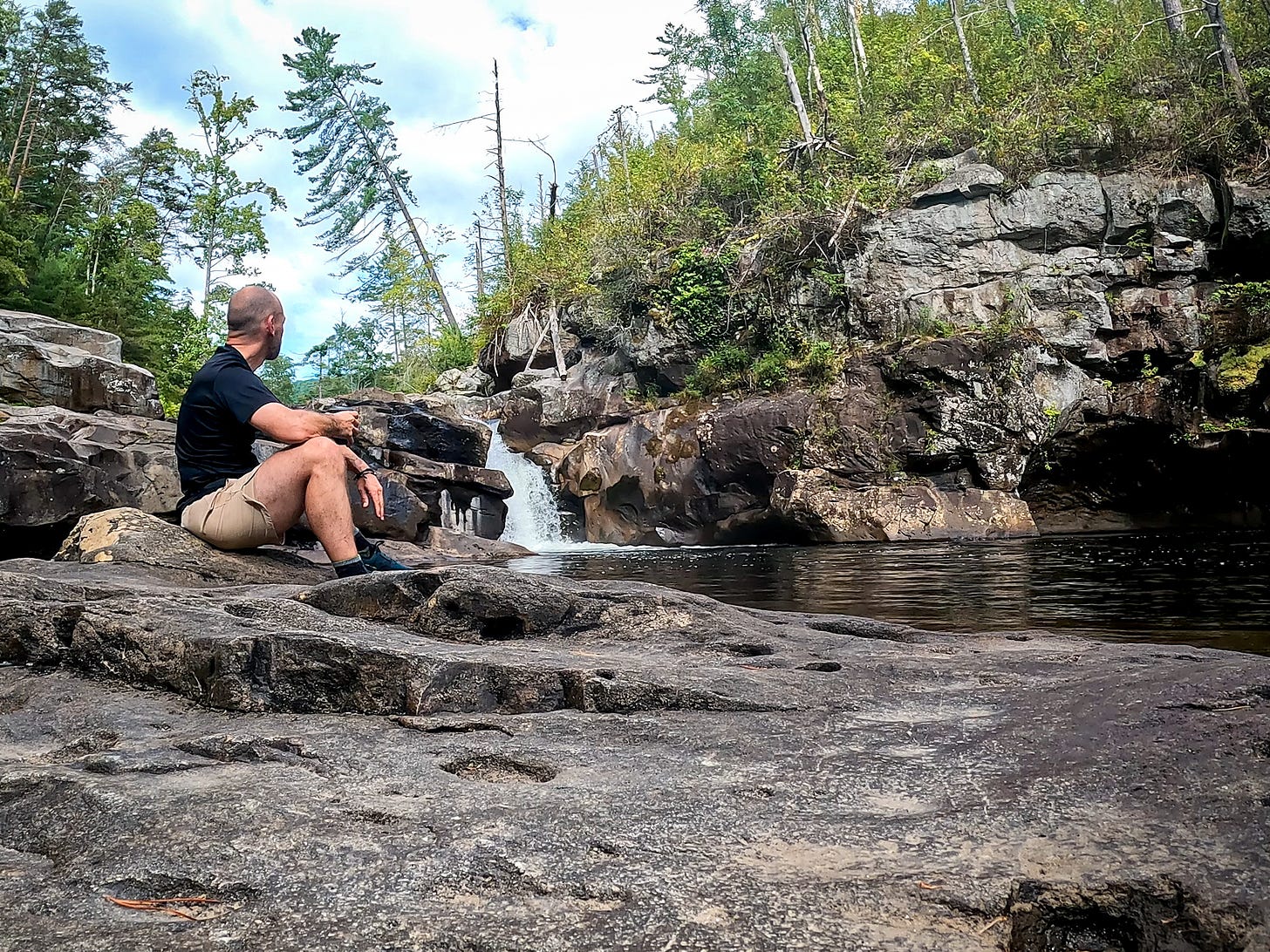
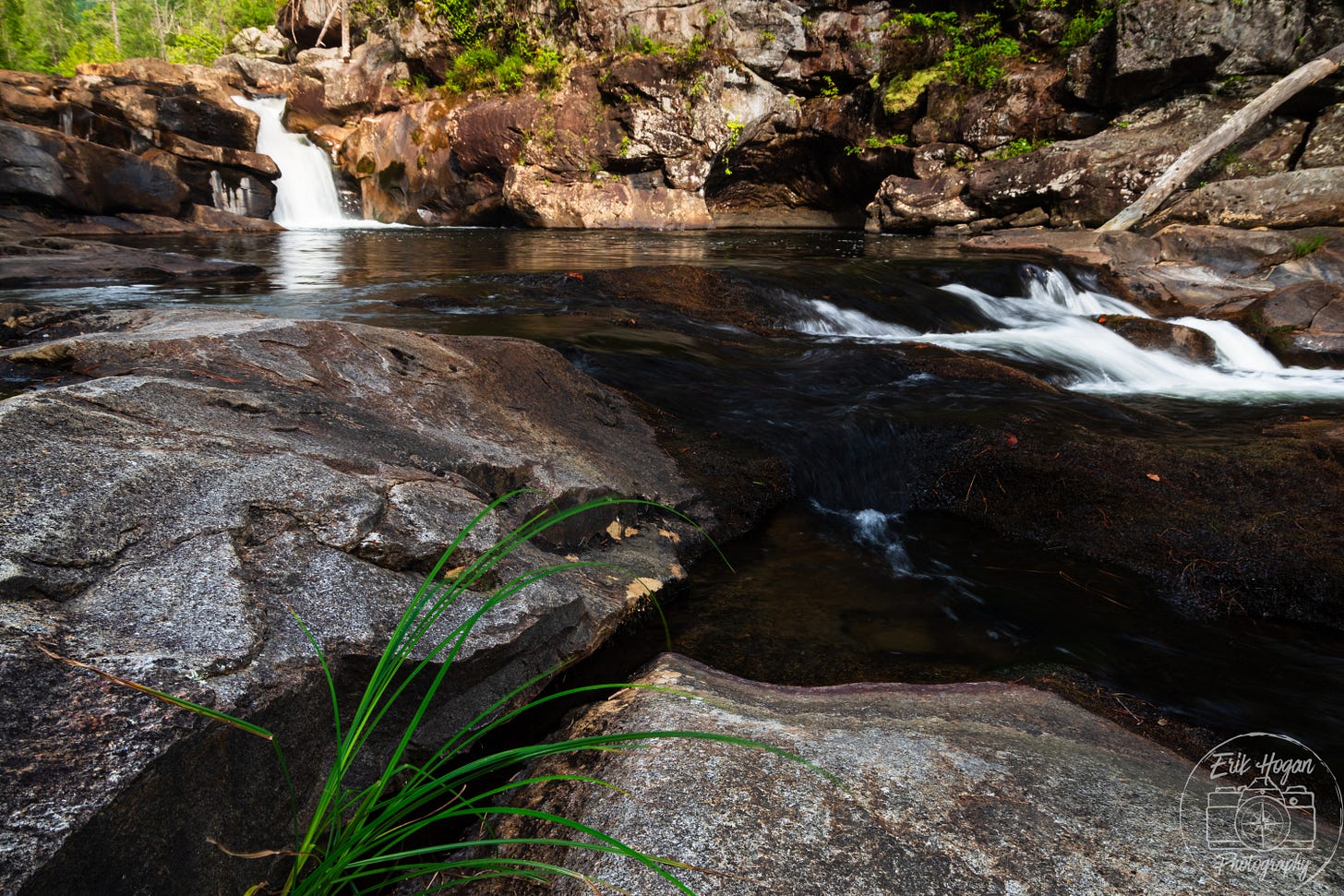

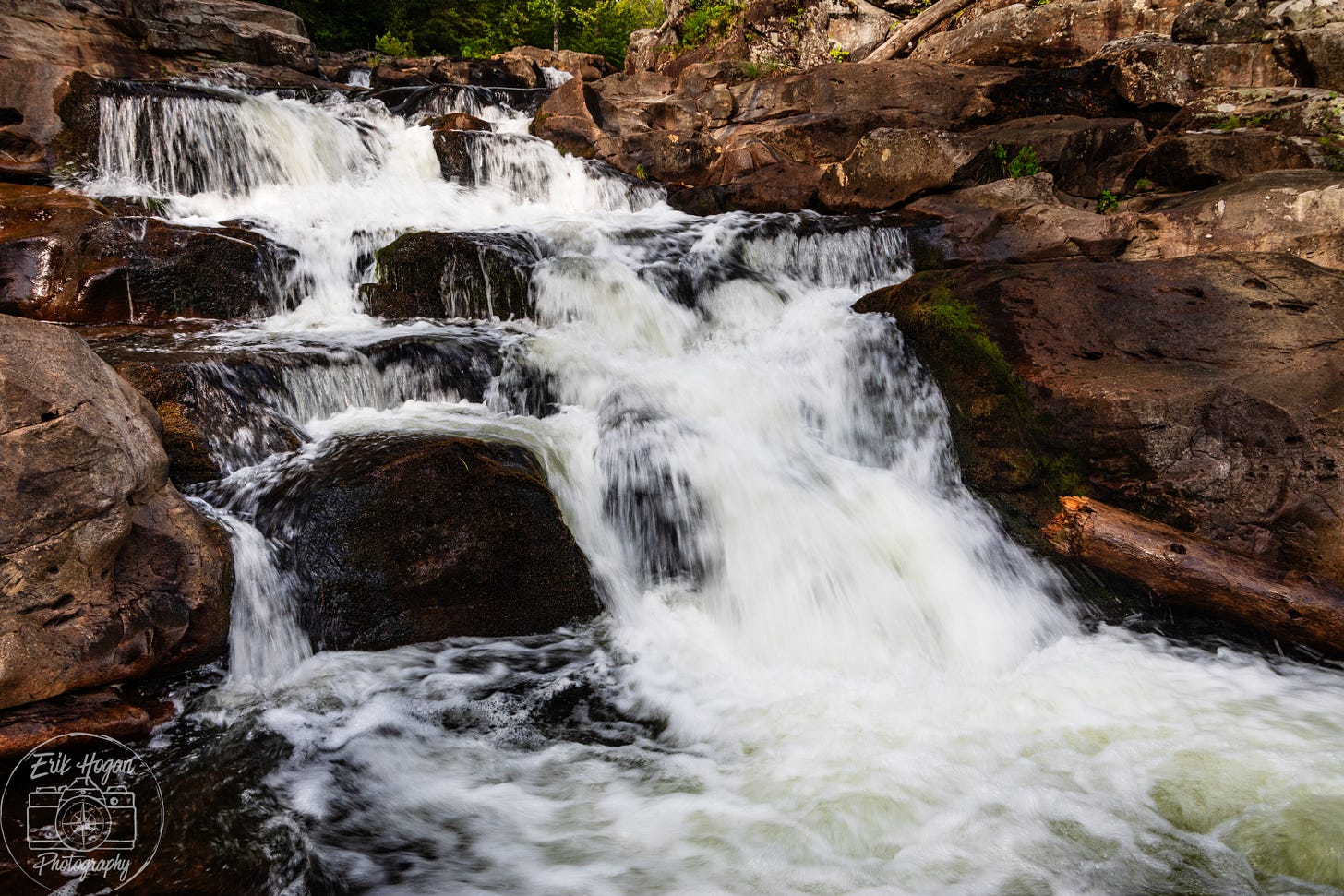


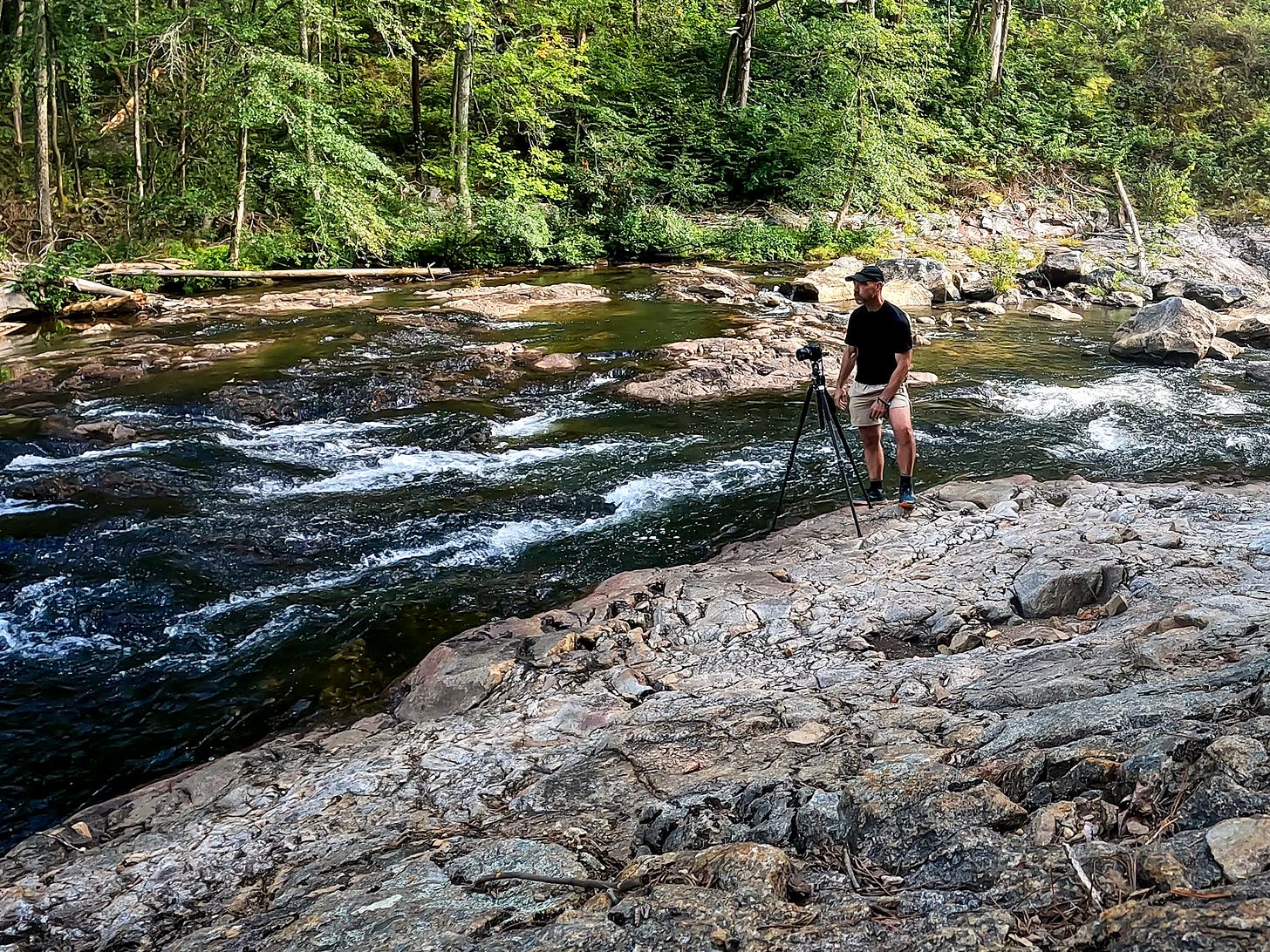

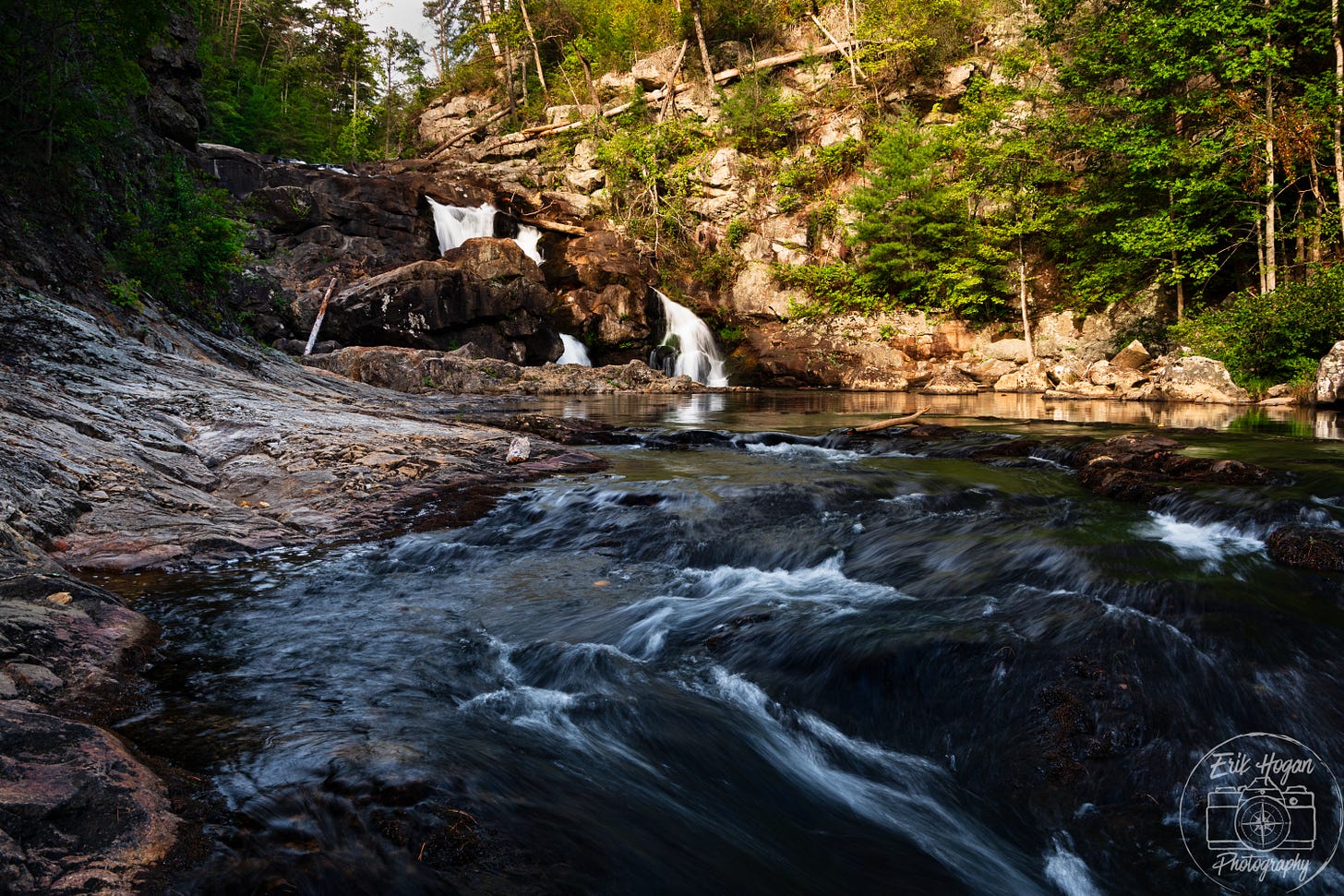

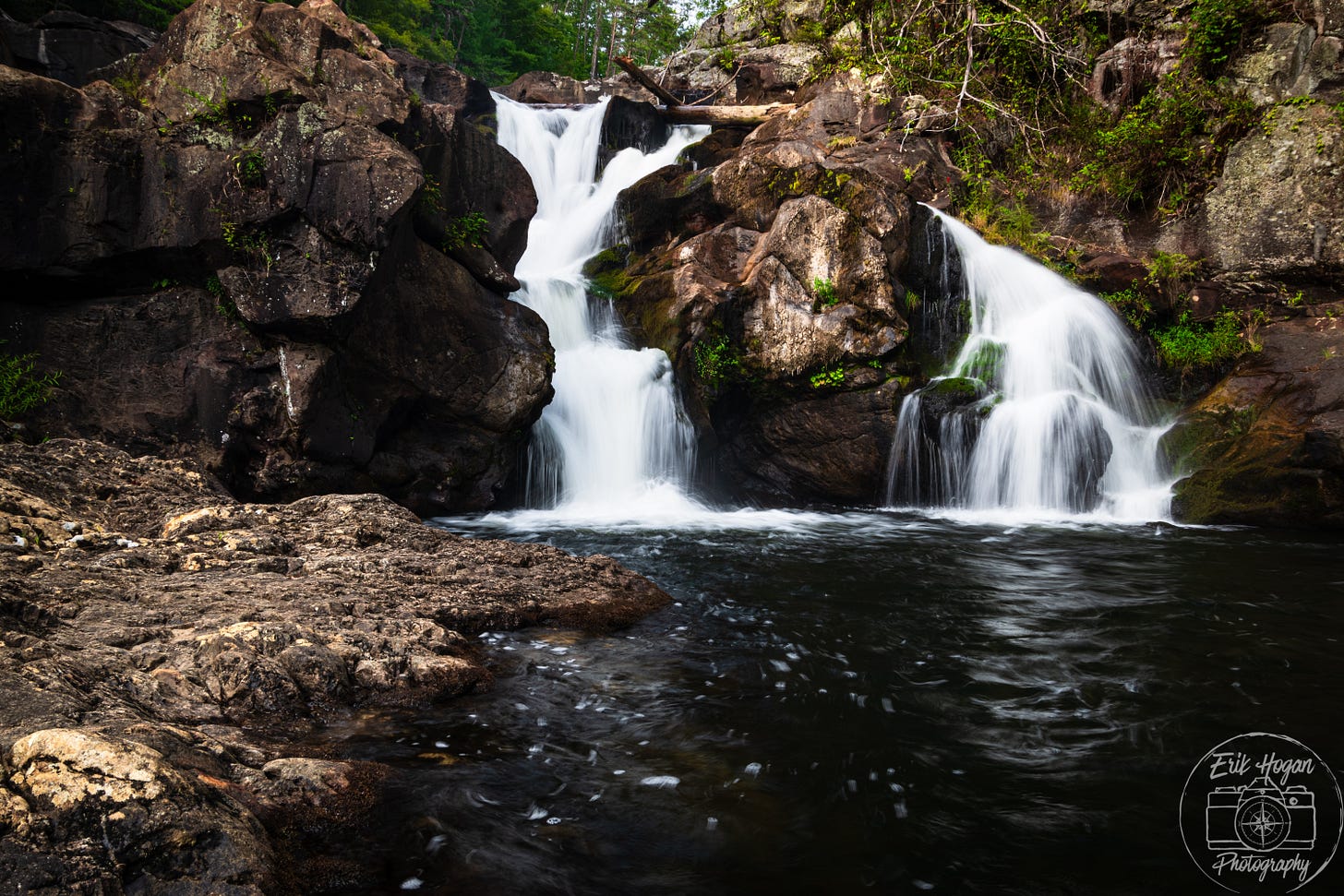


Your story reminds me of a place we used to visit, Falls Creek Falls. It’s not even a hike anymore since the road has been put right in where they built an industrial facility of some sort. That hike used to have around 20 creek crossings. Some of them were through rapid-flowing water knee-deep, so the chances of falling down after slipping on the rocky bottom were high.
We were camping out there once on July 2nd. It rained all night and snowed first thing in the morning. High elevation. We had to hike out with the creek flooded with extra water and it was up to my waist in a lot of spots! I’ve rarely been that cold.
Great story Erik. Sounds like you had quite an adventure (river crossings, untracked wilderness, bears) - just enough challenge to take you out of your comfort zone without the need for a helicopter airlift! PS You have some beautiful wildflowers this time of year.